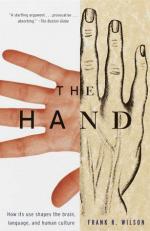
|
| Name: _________________________ | Period: ___________________ |
This quiz consists of 5 multiple choice and 5 short answer questions through The Grip of the Past.
Multiple Choice Questions
1. What is the critical significance of the paddle in Duchenne's model?
(a) It leaves one muscle group unbalanced.
(b) It allows for greater rotation.
(c) It sends simultaneous signals that result in the interplay of movement.
(d) It leaves one muscle group balanced.
2. What is the hand's optimal position over the keyboard?
(a) With the fingers spread as far as possible.
(b) A gentle curve.
(c) With the fingers fairly rigid.
(d) With the palm slightly convex.
3. From where does Sherrington discover signals originate to cause movement?
(a) The brain.
(b) The muscle itself.
(c) The blood.
(d) The spinal cord.
4. What is the hand considered in the metaphor in number 26?
(a) The bucket.
(b) The block.
(c) The beak.
(d) The balance beam.
5. How does the brain teach itself in order to juggle?
(a) By requiring the juggler to repeat a motion over and over.
(b) By learning how to trigger groups of muscles rather than individual muscles.
(c) By making the brain and hand work together.
(d) By learning how to trigger individual muscles rather than groups of muscles.
Short Answer Questions
1. What did the brain do when the forelimbs were no longer used to walk?
2. What does the hand "think" about as it helps you get ready for the day?
3. What does Duchenne figure out how to demonstrate?
4. What does Merlin Donald's theory of cultural and cognitive evolution propose?
5. According to Charles Sherrington, what is a natural progression?
|
This section contains 346 words (approx. 2 pages at 300 words per page) |

|




